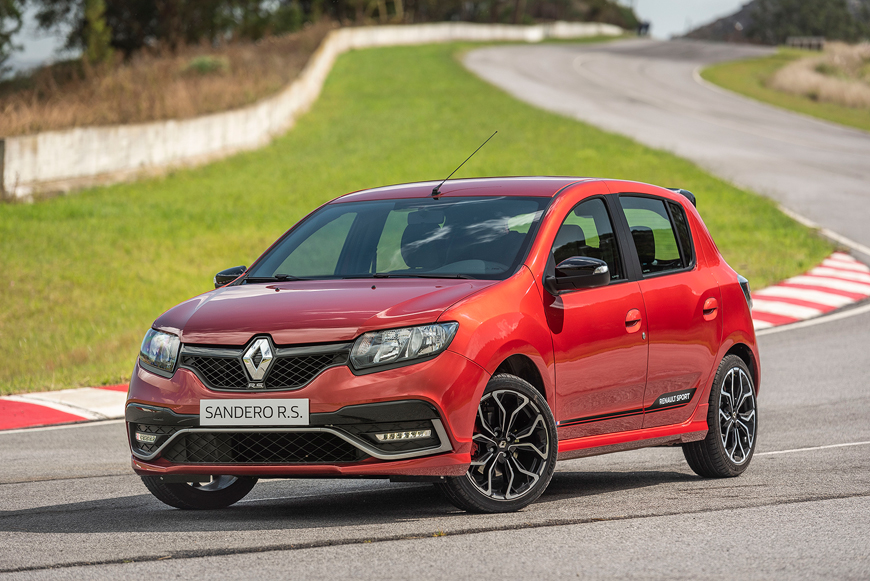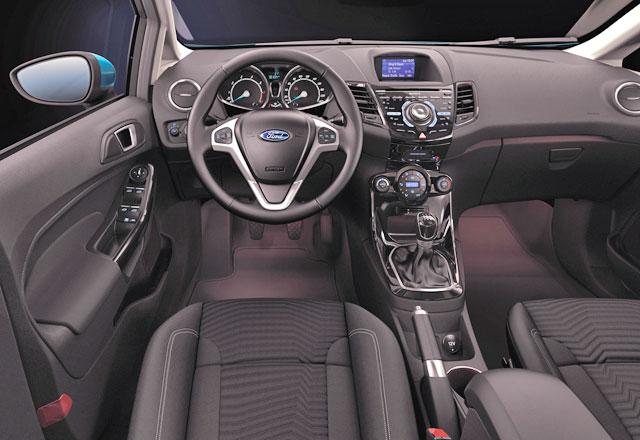You are here
Three flavours of hot hatch: Ford Fiesta ST, Renault Sandero R.S. & Toyota GR Yaris
By Ghaith Madadha - Jun 27,2022 - Last updated at Jun 27,2022

A practical, fun, fast and usually affordable mode of transport that had its origin in the 1970s Volkswagen Golf GTI and Renault 5 Alpine, the hot hatch’s heyday was the 1980s. A staple niche among most manufacturers who fielded one or more hot hatches, the segment saw a resurgence as various brands vied for record front-wheel-drive Nurburgring lap times during the 2010s.
Sadly in decline over the last couple of years as they are supplanted by bland “warm” hatches, heavy hybrids and bloated crossovers, there, however, remain a few excellent hot hatch heroes. Of similar size and weight, the Ford Fiesta ST, Renault Sandero RS and Toyota GR Yaris share a certain fun factor, but offer very different approaches and power points to the hot hatch recipe.
Ford Fiesta ST
The most rounded hot hatch listed here, the seventh generation Ford Fiesta ST, however, has a lot to live up to, given its superb and near universally well received predecessor. A more mature and marginally larger and heavier car than the one it replaces, the current Fiesta ST is powered by a down-sized engine that loses 0.1-litres and 1-cylinder, but gives no ground in terms of power and performance.
Assertively feisty in design and character, the Fiesta ST is a technologically contemporary take on the classic hot hatch, with light weight, punchy performance, keen handling and attainable pricing. Walking the right line between tech and tradition, it is an uncomplicated and unpretentious yet practical and nimble car, equally at home on city streets or sprawling country switchbacks with eager dynamic and old school rear torsion beam driving characteristics.
Recently revised, the Fiesta ST gains 22lb/ft torque for a 236lb/ft total available at 2,500-3,500rpm, but retains the same 197BHP output at 6,000rpm, courtesy of its prodigious 1.5-litre turbocharged 3-cylinder engine. Available in sporty 3- or family-friendly 5-door guises, the Fiesta ST delivers quick 6.5-second 0-100km/h acceleration and a 232km/h maximum. Driving the front wheels through a 6-speed manual gearbox, its optional limited-slip differential meanwhile improves cornering agility and road-holding.
Specifications
Engine: 1.5-litre, transverse turbocharged 3-cylinders
Gearbox: 6-speed manual, front-wheel-drive
Drive-line: Optional limited slip differential
Power, BHP (PS) [kW]: 197 (200) [147] @6,000rpm
Torque, lb/ft (Nm): 236 (320) @2,500-3,500rpm
0-100km/h: 6.5-seconds
Top speed: 232km/h
Length: 4,091mm
Width: 1,735mm
Height: 1,487mm
Wheelbase: 2,493mm
Kerb weight: 1,267kg
Turning circle: 11-metres
Suspension, F/R: MacPherson struts/torsion beam
Tyres: 205/40R18
Renault Sandero R.S.

A Renault-branded Latin American market hot hatch version of the French manufacturer’s Romanian Dacia subsidiary’s core hatch back model, the Renault Sandero R.S. is the most refreshingly uncomplicated car listed here. A straight-forward, affordable and old school hot hatch recipe utilising light weight, nimble handling and a comparatively bigger engine, the Sandero R.S. is among the most interesting Renaults we should have received in Jordan and the Middle East.
Conceptually closest to hot hatches of a couple generations ago like the first two Renault Clio R.S. iterations, the Sandero R.S. is powered by naturally-aspirated 2-litre 4-cylinder engine driving the front wheels through a 6-speed manual gearbox, and employs less complicated torsion beam rear suspension. Eschewing more expensive, complex and heavy technologies, the Sandero RS retains a light 1,181kg weight, and is expected to deliver eager agility and manoeuvrability.
Developing 148BHP at 5,750rpm and 151lb/ft torque at 4,000rpm when using ethanol-infused petrol, or marginally less with regular petrol, the Sandero R.S. builds power in a progressive manner and is expected to offer similar driving charisma, throttle control precision, low-end responses and linear delivery as older Clio R.S. models. Brisk with its 200km/h top speed and 8-second 0-100km/h time, acceleration would, however, be slightly blunted when running non-ethanol fuel.
Specifications
Engine: 2-litre, transverse 4-cylinders
Gearbox: 6-speed manual, front-wheel-drive
Power, BHP (PS) [kW]: 148 (145) [110] @5,750rpm
Torque, lb/ft (Nm): 151 (205) @4,000rpm
0-100km/h: 8-seconds
Top speed: 200km/h
Length: 4,070mm
Width: 1,733mm
Height: 1,499mm
Wheelbase: 2,590mm
Kerb weight: 1,181kg
Turning circle: 10.6-metres
Suspension, F/R: MacPherson struts/torsion beam
Tyres: 205/45R17
Toyota GR Yaris

The latest sport offering from Toyota, the GR Yaris arguably goes furthest in shedding the brand’s un-exciting image that it picked up during the mid-2000s. Unlike the Toyota 86 and latest Supra coupes developed in extensive collaboration with Subaru and BMW, respectively, the GR Yaris is an authentically full-blooded Toyota. Conceived to compete in the World Rally Championship, road legal GR Yaris versions were developed to meet homologation requirements.
A heavily modified high performance relation to Toyota’s dependably but tame urban runaround, the GR Yaris is different beast altogether, with four-wheel-drive and sophisticated double wishbone rear suspension. With a wider, longer stance than garden variety Yaris model, the GR’s rear platform is borrowed from its larger Corolla sister, while its four-wheel-drive can vary dower distribution from front to rear for improved road-holding and stability or sportier handling agility.
Offered with optional front and rear Torsen limited slip differentials with Circuit Pack specification to better channel its prodigious output, the GR Yaris is a more dedicated high performance hot hatch. With an aggressively tuned turbocharged 1.6-litre 3-cylinder engine developing 357BHP at 6,500rpm and 266lb/ft torque throughout 3,000-4,600rpm, the GR Yaris carries it small and light 1,280kg frame at swift pace, dispatching 0-100km/h in 5.5-seconds and capable of 230km/h.
Specifications
Engine: 1.6-litre, transverse turbocharged 3-cylinders
Gearbox: 6-speed manual, four-wheel-drive
Drive-line: Optional front and rear Torsen limited slip differentials
Power, BHP (PS) [kW]: 257 (261) [192] @6,500rpm
Torque, lb/ft (Nm): 266 (360) @3,000-4,600rpm
0-100km/h: 5.5-seconds
Top speed: 230km/h
Length: 3,995mm
Width: 1,805mm
Height: 1,455mm
Wheelbase: 2,560mm
Kerb weight: 1,280kg
Turning circle: 10.62-metres
Suspension, F/R: MacPherson struts/double wishbones
Tyres: 225/40R18
Related Articles
A three time front-wheel-drive Nürburgring Nordschleife record holder in its previous two generation, the latest incarnation of the Renault
In its element on London’s tight and busy streets, the UK’s best-selling Ford Fiesta is affordable, agile, economical and sensible. With 131,254 Fiestas registered in the UK in 2014, it outsells the next best-selling Ford Focus (46,114) and its chief rival and third best-selling Vauxhall Corsa (49,471), according to Auto Express.
Back with a vengeance, the Renault Megane R.S.

















